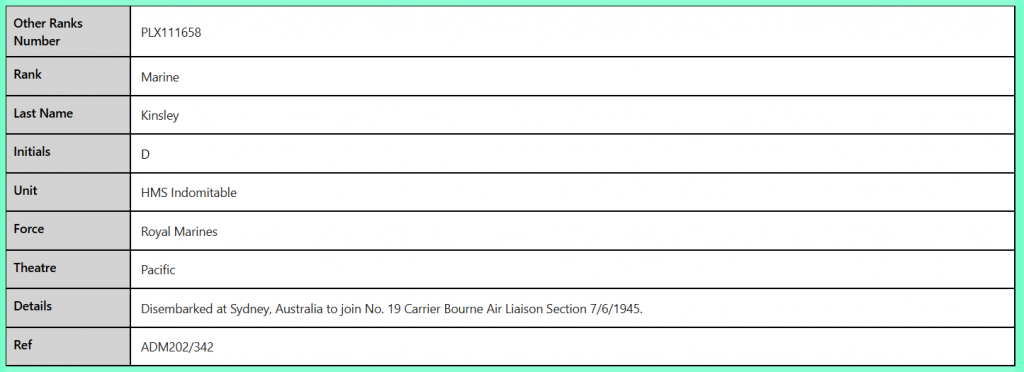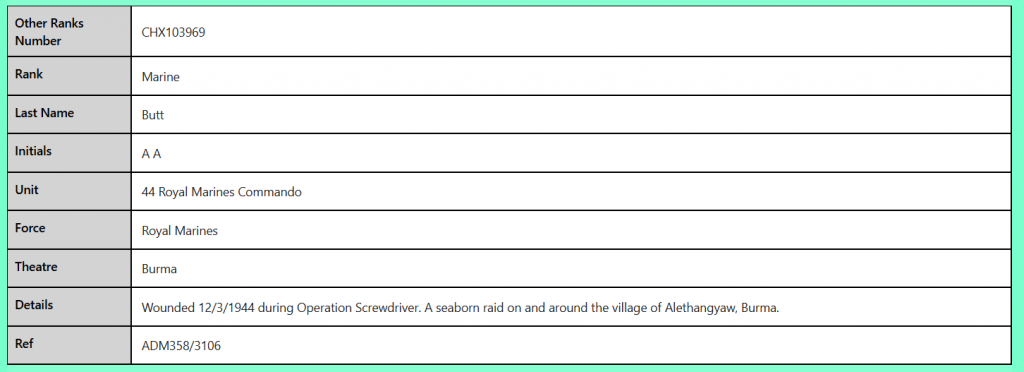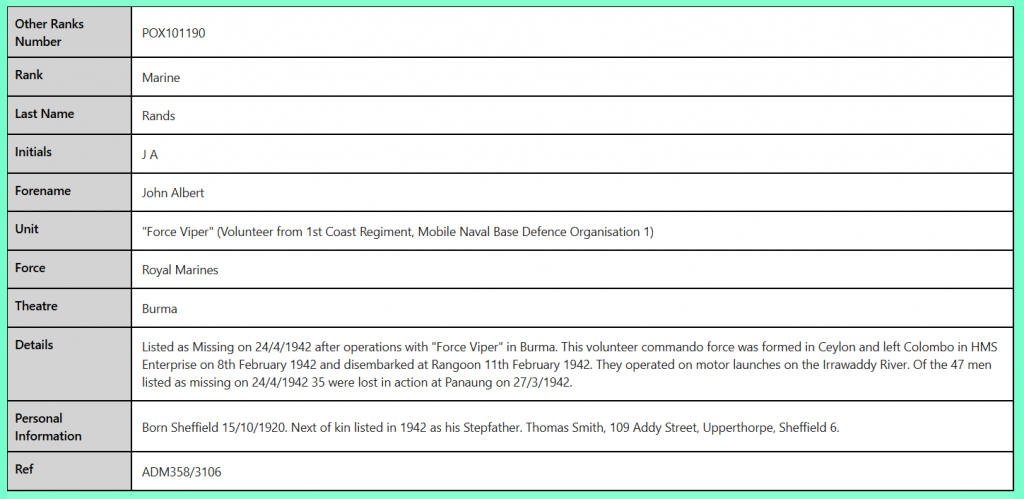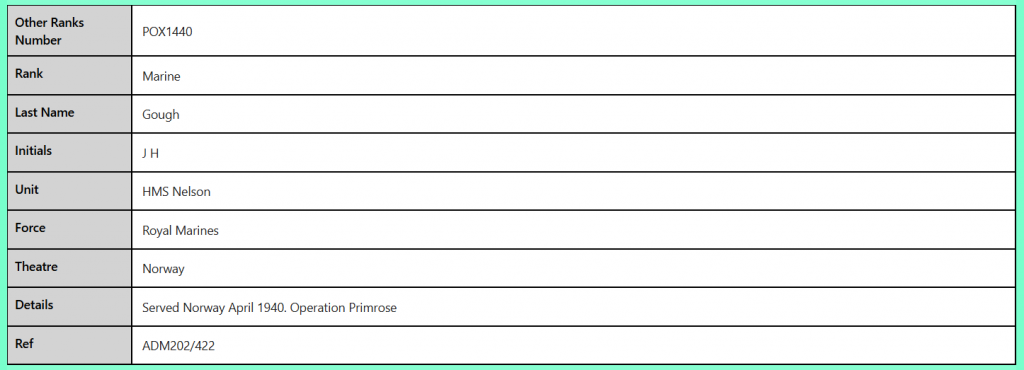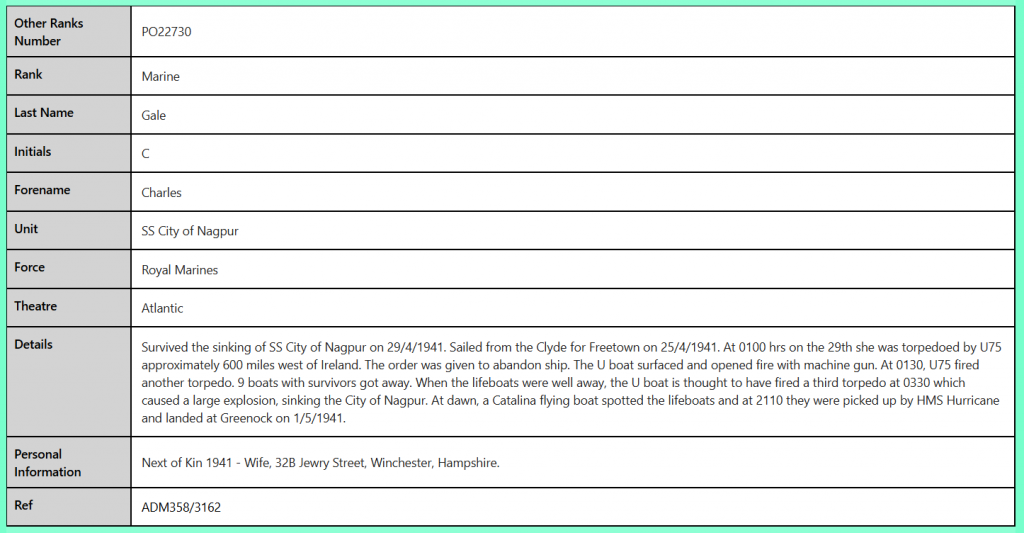
Royal Marines WW2 Records
For the seaborne element, the Royal Marines WW2 records are identical to those of the Royal Navy.
For land based Marines War Diaries are consulted along with Casualties records. The diaries can include nominal rolls which are invaluable.
The infantry battalions along with supporting units saw action overseas early in the war. From Norway to Crete, North Africa to Madagascar.
Early in 1942 the battalions were formed into commando units. Existing units were converted and new Commando formed. By the time the war ended in 1945 there were nine Royal Marines Commando battalions.
The commandos fought at Dieppe, Tunisian campaign, Sicily, Italy and Burma. Then landing on D-Day and the advance into Normandy. The Rhine crossing and later the Battle of the Scheldt.
D-Day was the largest ever deployment for the Royal Marines. Some 17,500 in total. There were those one larger vessels such as battleships and Cruiser. Also the Commando battalions and supporting units. In addition there were the Landing craft crew. 500 Officers and 12,500 other ranks were trained as landing craft crew. Indeed some two thirds of Landing Craft Assault (LCAs) on D-day were manned by Royal Marines. These craft ferried British, Canadian and American troops to the beaches.
The databse is compiled mostly from records held at the National Archives, Kew.
What can be found in our Royal Marines WW2 Records
For the seaborne element please go to the Royal Navy page for details.
Survivors of Sinking’s. Wounded at sea.
Killed or Missing. Air Raid casualties.
All records will show where a man was serving. This could be training with his Royal Marines Division or maybe in transit overseas. The ship he was serving on or landing craft. Or the unit in the case of men serving in Infantry or commando battalions and their supporting units.
Casualties on land.
Awards & Mention in Despatches.
Divisional Orders.
****
Examples of Royal Marines WW2 Records from our database.
